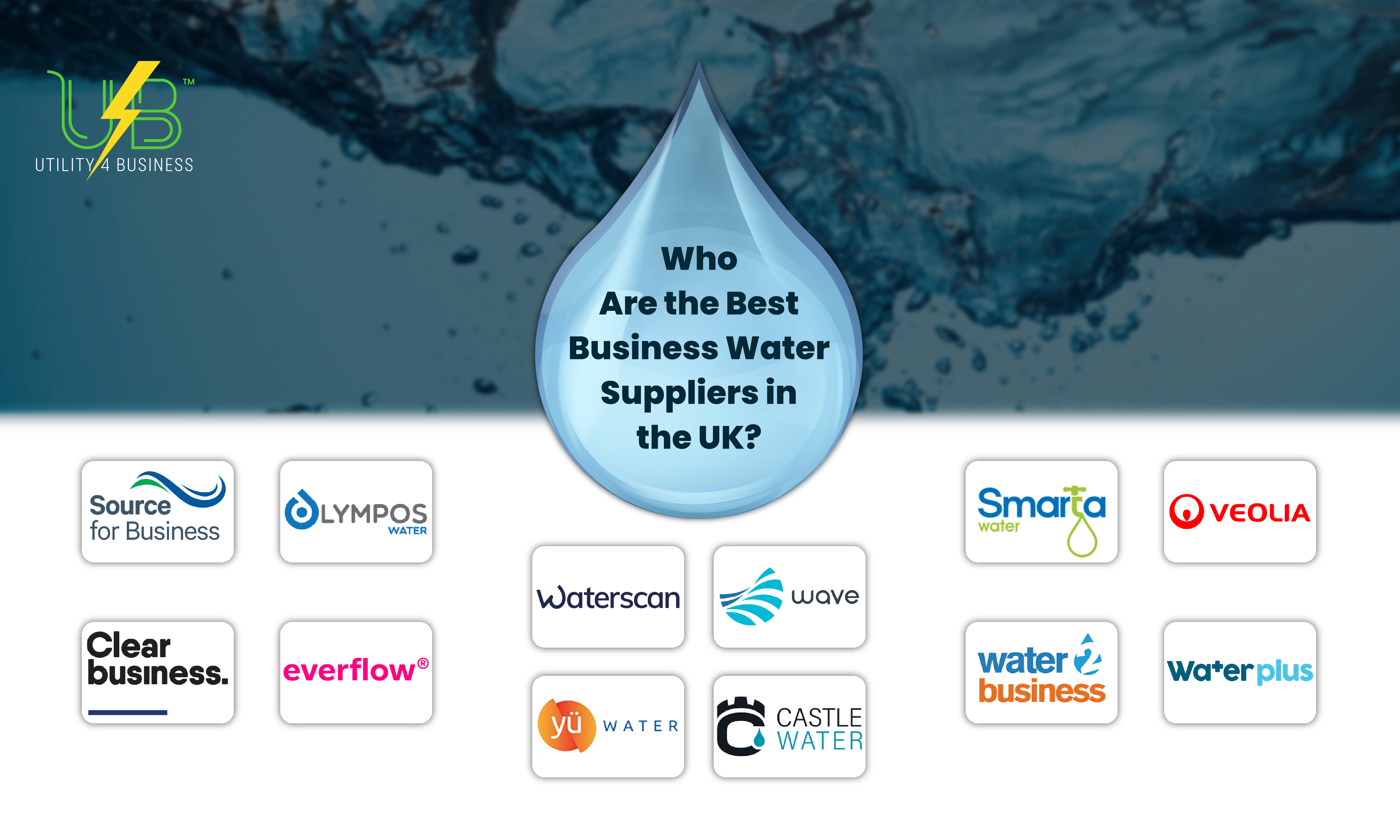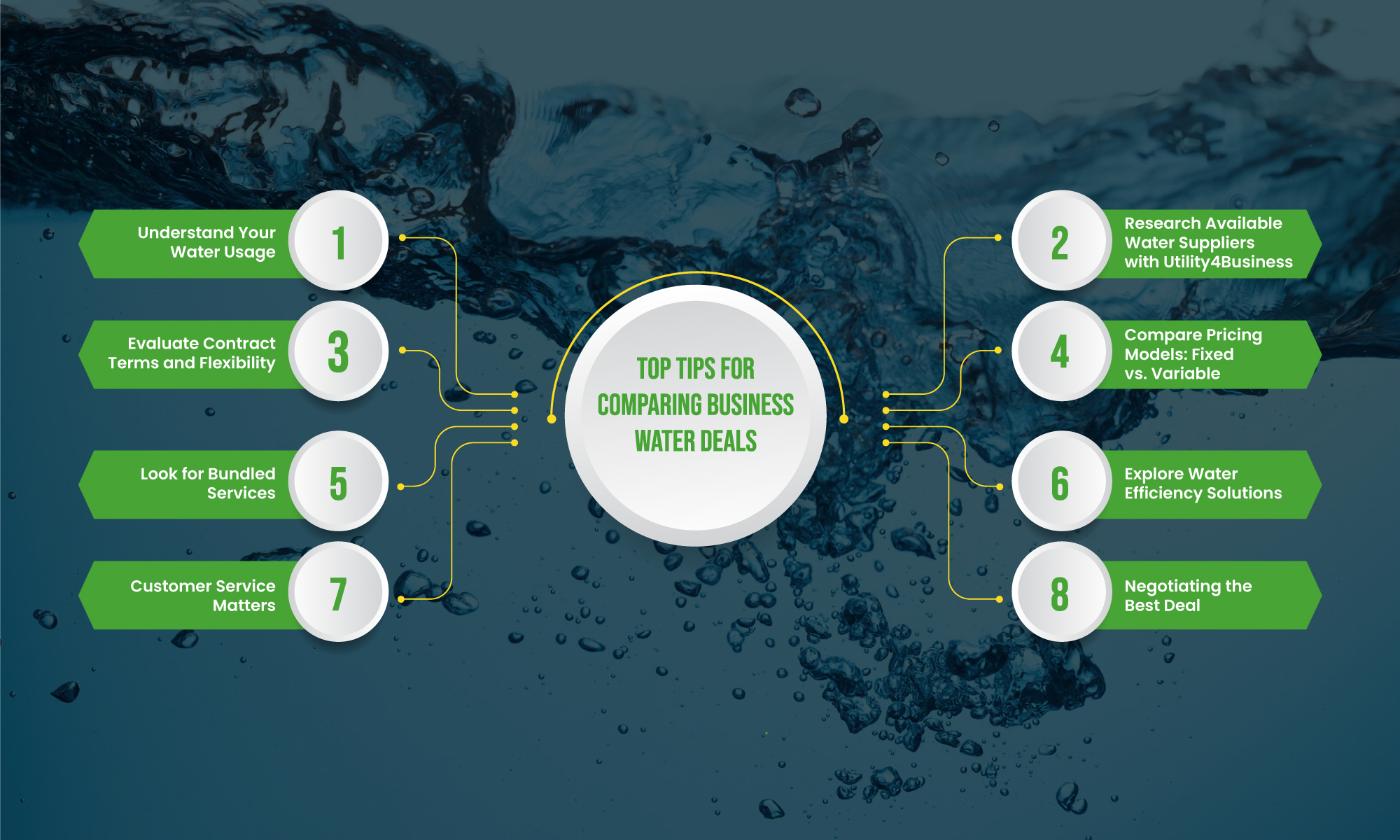Smart Energy Choices: Switching Providers for UK Enterprises
Smart Energy Choices

With energy costs being one of the largest overheads for enterprises in the UK, it is important for businesses to manage their gas and electricity spending efficiently. Switching to a better utility provider that offers more competitive rates is an effective strategy to reduce energy bills significantly. This comprehensive guide provides in-depth insights on researching suppliers, selecting optimal tariffs, managing transitions and sustaining long-term savings.
Comparing Energy Supplier Options
The first step that enterprises should take is thoroughly researching the various energy suppliers operating in their region. There are several price comparison websites that allow you to compare plans and rates offered by different providers based on your expected usage, location and other parameters.
You can also directly visit suppliers' websites for more details to switch utilities on their commercial and industrial offerings. Compare options from large established utility brands as well as relatively newer challenger companies that are disrupting the market.
Evaluating Fixed vs Variable Rates
Consider both fixed rate plans and variable rate plans in your analysis. While fixed rates provide protection from market volatility, variable rates could start lower but fluctuate based on energy market conditions. Weigh their relative advantages and disadvantages closely based on your risk appetite.
Apart from conventional energy sources, also evaluate certified green energy suppliers as they may have competitive pricing in addition to sustainability benefits. Shortlist 4-5 suppliers for further assessment based on your preliminary research.
Analysing Usage Patterns and Demand
Before contacting any shortlisted providers, undertake a detailed analysis of your enterprise's energy consumption patterns for the last 24-36 months. Examine usage across different hours of the day, days of the week, weeks, months, seasons and utilities business activities.
Identifying trends, peak times, cyclical variations and fluctuations in your consumption will help select the optimal tariff plan aligned to your unique usage characteristics. Estimate your annual usage and maximum demand accurately to share with prospective suppliers.
Comparing Supplier Service Offerings
With your consumption data ready, you can now start evaluating the full range of offerings from the shortlisted utilities companies in-depth. Compare rates, contract durations, associated tools, customer service quality, brand reputation and additional services offered.
Look beyond just the unit rates and standing charges in the tariff plans. Carefully review contract terms, exit clauses, renewal options, procedures for rate/plan changes, potential penalties, available incentives and any other binding conditions before deciding.
Selecting the Optimal Tariff
Analyse your usage patterns and select the optimal business utilities accordingly. Compare fixed rate plans, variable rate plans, flexible rate plans and time-of-use tariffs. Time-of-use and dynamic pricing plans that provide cheaper rates during off-peak windows aligned to your operations can provide good savings.
Give preference to suppliers that also offer relevant energy management tools and services such as analytics, efficiency advice, onsite assessments, smart controls etc. Evaluate plans from both large national providers as well as smaller regional players.
Managing Timelines for Switchover
Once you have selected the most appropriate utility provider and business essentials, they will manage most of the switchover process including paperwork. You may need to provide a Letter of Authority and recent meter readings during the transition period.
The entire process typically takes about 21 days but can vary across suppliers. Your new provider will confirm once the switchover is fully completed at their end. Use this transition time to settle any outstanding dues with your old provider.
Settling into New Service
In the first 2-3 billing cycles post switchover to the new commercial utilities provider, scrutinize your energy bills carefully to ensure you are being charged correctly as per the contracted tariff rates and terms. Follow up regarding any discrepancies immediately to realize projected savings faster.
Going forward, continue to monitor your energy usage and utility bills closely every month. Consider revising your tariff plan during renewals if your business' consumption profile changes significantly over time due to production shifts, equipment upgrades etc.
Importance of Account Management
Maintain ongoing engagement with your appointed key account manager for periodic reviews and to provide feedback. Developing a strategic partnership with your utility provider enables better energy management and savings. Explore additional services they offer like sub-metering, onsite assessments, efficiency financing etc.
Evaluating New Suppliers
Instead of being locked in with a single provider long-term, continue to evaluate alternate suppliers in the market periodically.
Be open to switching again if you find better plans and service offerings from competitors. This ensures you always benefit from the most competitive business utility rates.
However, any switch decision should factor in potential transition and administration costs versus expected savings. There may also be contractual restrictions or exit fees with your existing provider. So review all parameters before taking a call.
Negotiating With Incumbents
An alternative approach is negotiating improved terms with your existing business utility services instead of switching, especially if you have been a long-standing or high-value customer.
Inform them about exploring better market options for cost optimization and check if they can match pricing or provide retention discounts.
Be prepared with competitive quotes from alternatives to strengthen your position while negotiating. However, such deals may only provide temporary relief. Periodically evaluating the market is key to benefitting from the lowest utility rates amidst volatility.
Best Practices for Managing Switches
Here are some best practices enterprises should follow to ensure smooth transition when changing utilities in business:
- Give sufficient transition timelines in planning
- Settle all outstanding dues with old provider
- Share accurate meter readings for switchover
- Verify new billing is as per contracted rates
- Highlight any discrepancies in the first few bills
- Develop engagement with new account manager
- Continue tracking consumption data
Sustaining Savings Over Time
While switching to improved utilities for business contracts generates immediate savings, enterprises should adopt a more holistic approach for long-term cost optimization. Just changing suppliers provides only one-time benefits.
Investing in onsite energy efficiency, conservation initiatives, staff engagement, HVAC optimization, building automation, and clean energy generation creates sustained impact on overhead reduction.
Implementing Energy Management
Simple measures like upgrading to energy efficient lighting, motors, pumps and appliances can yield major savings with reasonable payback periods. Enabling behavioral changes and energy-conscious operations also improves bottom lines over time.
Evaluating onsite solar PV, wind turbines, battery storage, EVs and microgrid solutions allows greater control over energy costs. However, appropriate technical feasibility studies are required before investing.
Realizing Enhanced Savings
Combining the competitive procurement of business supplies with strategic initiatives to reduce overall consumption and improve efficiency provides the optimal route to enhanced overhead savings from utilities.
While supplier switching should be reviewed periodically, efficiency improvements and sustainability investments are more long-term decisions for enterprises focused on both cost and environmental performance. Adopting new technologies also boosts resilience.
Managing Switchover Timelines
To ensure a smooth transition when switch utilities, enterprises should:
- Initiate process well in advance
- Settle all dues with existing provider
- Provide accurate meter readings for switch date
- Verify first billing from new supplier
- Highlight any discrepancies immediately
- Develop engagement with key account manager
Sustaining Long-Term Savings
Along with periodic supplier reviews, utilities business should:
- Track energy consumption patterns regularly
- Identify and execute energy optimization projects
- Implement staff engagement initiatives
- Integrate building automation and smart controls
- Invest in onsite solar, storage, EVs etc.
- Continually improve efficiency and sustainability
Key Takeaways for Enterprises
In summary, key steps to ensure successful energy supplier switching include:
- Thoroughly comparing a wide range of utilities company
- Analysing your unique usage characteristics
- Evaluating rates, contract terms, incentives and services
- Selecting optimal tariff plans matched to your requirements
- Managing timelines and paperwork for smooth switchover
- Settling into new provider service and verifying billing accuracy
- Developing engagement with your new account manager
- Continuously monitoring consumption and overheads
- Renegotiating during contract renewals if needed
- Investing in energy efficiency and sustainability
Conclusion
By following these structured strategies and best practices, enterprises can make well-informed choices while selecting business utilities providers and tariff plans to optimize energy costs significantly. Combining competitive supplier procurement with improved in-house management enables maximum overhead savings.
Reviewing energy contracts periodically and switching providers when better options are available, while simultaneously enhancing efficiency, conservation and sustainability, allows enterprises to realize the dual benefits of controlling costs and reducing environmental footprint.
Find This Article Helpful? Share It Now!
At Utility4Business, we offer top-notch customer support and business utility solutions for businesses across the UK. Consider sharing this article and helping others discover how our expertise can add value to their business success.

Read Our Latest Posts
Explore our latest blog posts and learn how Utility4Business can support your business growth with tailored utility solutions and services. Stay ahead of the curve with the latest information from industry experts and take advantage of our user-friendly comparison services to find the best business deals.


Get Connected
At Utility4Business, our team of experts can help you figure out the highest-value business utility deals that will help your business grow over time.


